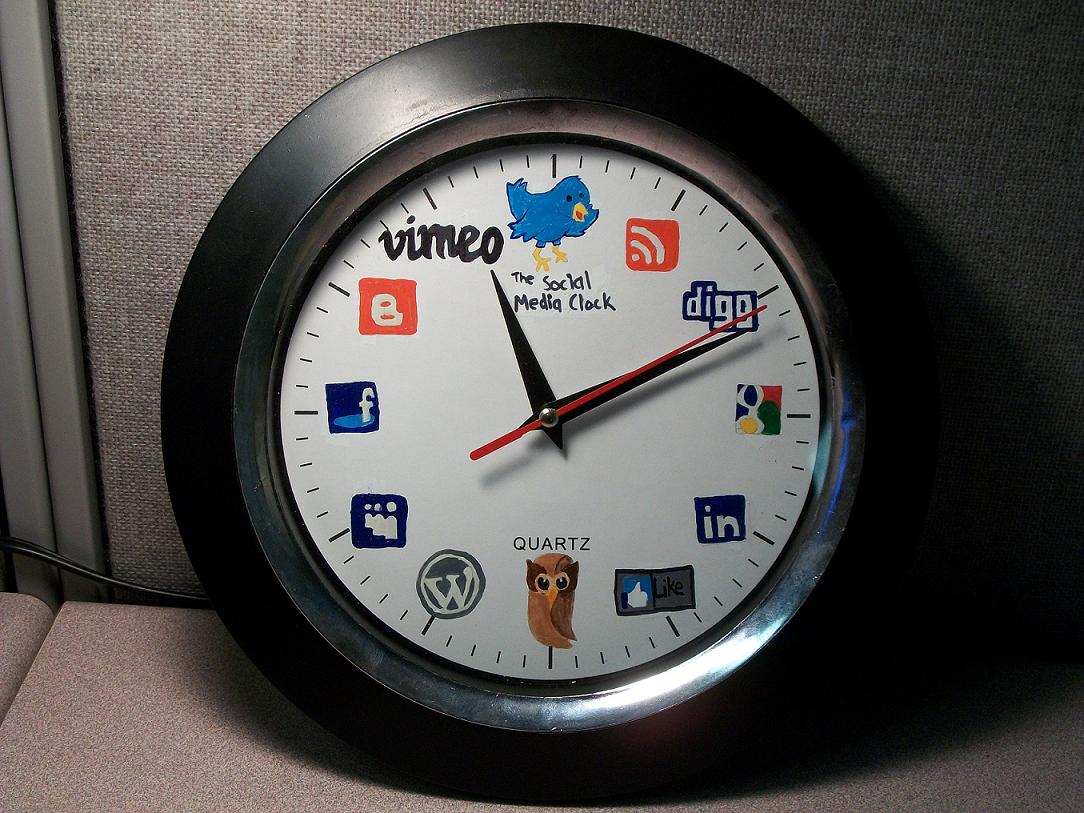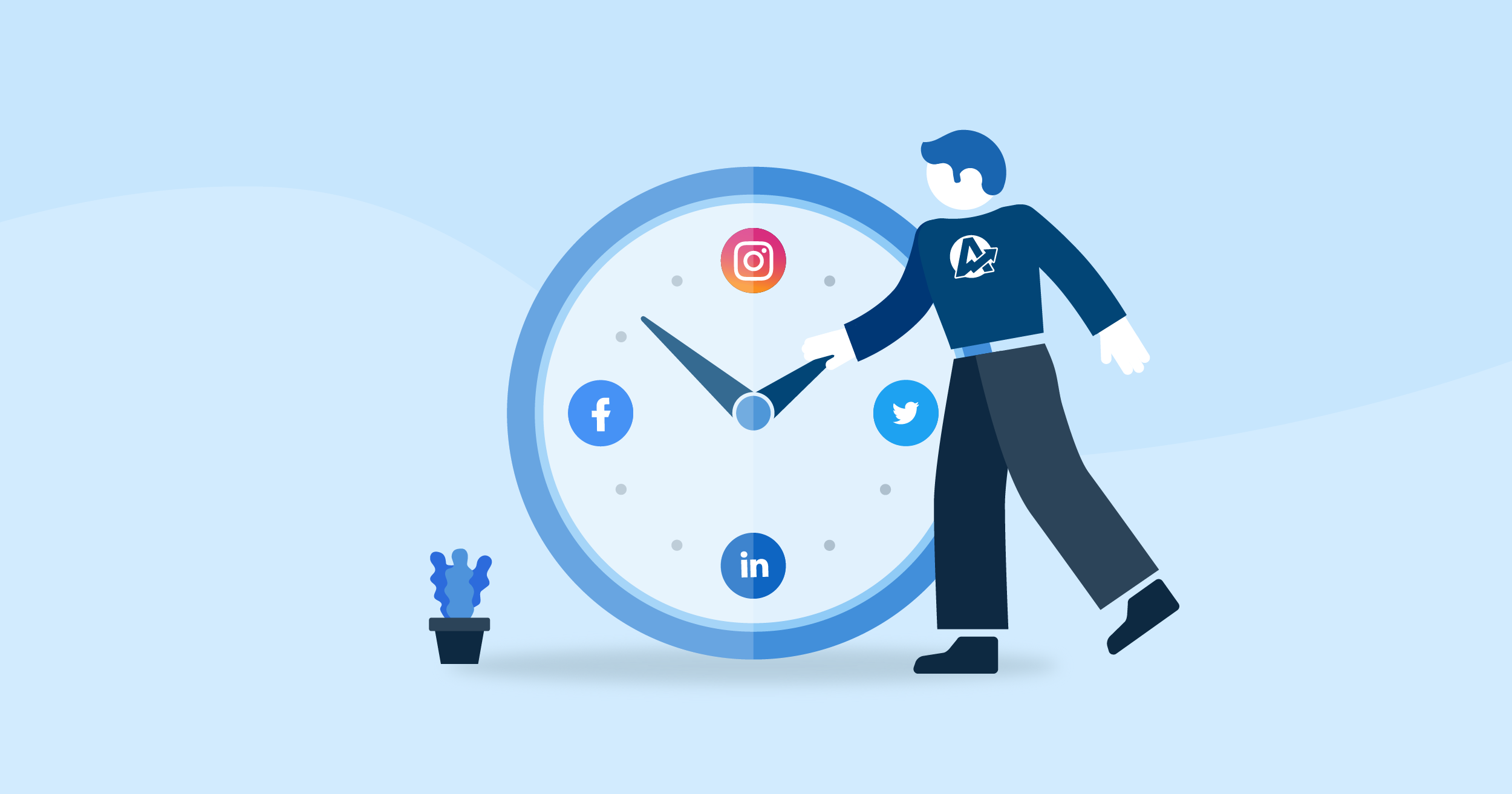The Best Times to Post on Social Media for Maximum Engagement
Understanding the best times to post on social media is crucial for maximizing engagement, visibility, and reach. While there's no one-size-fits-all answer, insights from various studies and social media analytics can guide you in finding the optimal times to connect with your audience.
This article explores the best posting times across different social media platforms, helping you create a more effective social media strategy.
The Importance of Timing in Social Media
 Posting at the right time can significantly impact your social media performance. Engagement rates, including likes, comments, shares, and clicks, tend to vary throughout the day and week.
Posting at the right time can significantly impact your social media performance. Engagement rates, including likes, comments, shares, and clicks, tend to vary throughout the day and week.
Factors influencing these variations include user behavior, time zones, and platform-specific dynamics.
- User Behavior: Understanding your audience’s online habits is key. People tend to check social media during breaks, commutes, and leisure time. By aligning your posts with these periods, you increase the likelihood of engagement.
- Time Zones: If your audience is global, consider the time zones they are in. Posting at times that cater to multiple time zones can help you reach a broader audience.
- Platform Dynamics: Each social media platform has its unique user base and activity patterns. Tailoring your posting schedule to fit these patterns can enhance your visibility and engagement.
Optimal Posting Times for Major Platforms
 Different social media platforms attract various demographics and user behaviors, influencing the best times to post. Here, we examine the optimal posting times for Facebook, Instagram, Twitter, and LinkedIn based on current research and trends.
Different social media platforms attract various demographics and user behaviors, influencing the best times to post. Here, we examine the optimal posting times for Facebook, Instagram, Twitter, and LinkedIn based on current research and trends.
Facebook remains one of the most popular social media platforms, with a diverse user base. To maximize engagement on Facebook, timing your posts strategically is essential.
- Best Times to Post: Studies suggest that the best times to post on Facebook are weekdays between 9 AM and 1 PM. Specifically, Tuesdays and Thursdays see the highest engagement rates.
- Worst Times to Post: Avoid posting late at night and early morning (10 PM to 4 AM) as engagement rates tend to drop during these hours.
- Weekend Posting: While weekdays are generally better, posting on weekends, especially on Saturdays between 10 AM and 1 PM, can also yield good results depending on your audience's habits.
- Consistency: Maintaining a consistent posting schedule helps build a loyal audience. Regular updates during peak times can keep your followers engaged and increase visibility.
Instagram’s visual-centric platform attracts a younger demographic, with peak usage during non-working hours. To optimize your Instagram posts, consider the following timing strategies.
- Best Times to Post: The highest engagement on Instagram occurs on weekdays, particularly Mondays, Wednesdays, and Thursdays between 11 AM and 1 PM and evenings from 7 PM to 9 PM.
- Worst Times to Post: Similar to Facebook, posting late at night or very early in the morning (11 PM to 6 AM) is less effective due to lower user activity.
- Weekend Posting: Saturday mornings around 10 AM can also be a good time to post, especially for lifestyle and leisure content.
- Use of Stories: Instagram Stories see high engagement in the evening, making it a great time to post updates, behind-the-scenes content, or interactive polls.
Twitter’s real-time nature makes it a go-to platform for news, updates, and conversations. Timing your tweets for maximum impact is crucial for engaging with your audience.
- Best Times to Post: The best times to post on Twitter are weekdays between 8 AM and 10 AM, and around 6 PM. Wednesdays and Fridays often see the highest engagement.
- Worst Times to Post: Similar to other platforms, late night and early morning posts (10 PM to 4 AM) generally receive lower engagement.
- Weekend Posting: Posting on weekends, particularly on Saturdays between 9 AM and 11 AM, can also be effective for reaching a broader audience.
- Frequency: Due to Twitter's fast-paced environment, posting multiple times a day is beneficial. Spacing out your tweets during peak times can increase visibility and interaction.
LinkedIn is a professional networking platform, with peak activity during business hours. To maximize engagement on LinkedIn, focus on timing your posts to align with the workday.
- Best Times to Post: The best times to post on LinkedIn are Tuesdays, Wednesdays, and Thursdays between 9 AM and 12 PM. These periods align with the beginning of the workday and mid-morning breaks.
- Worst Times to Post: Avoid posting late in the evening and on weekends when professionals are less likely to engage with work-related content.
- Content Type: LinkedIn favors in-depth, professional content. Posting articles, case studies, and industry insights during peak hours can drive higher engagement.
- Engagement Patterns: Engaging with your audience through comments and shares during peak times can further enhance your visibility and credibility on the platform.
Analyzing Your Own Data
While general guidelines provide a useful starting point, analyzing your own social media data is essential for optimizing your posting schedule. Here are some strategies to help you analyze and refine your timing.
- Platform Analytics: Utilize built-in analytics tools on each platform (e.g., Facebook Insights, Instagram Analytics, Twitter Analytics, LinkedIn Analytics) to track engagement metrics and identify peak activity periods for your audience.
- A/B Testing: Conduct A/B testing by posting similar content at different times to see which timing yields better engagement. Use the results to refine your posting strategy.
- Third-Party Tools: Consider using third-party analytics tools like Hootsuite, Buffer, or Sprout Social to gain deeper insights into your social media performance and optimize your posting schedule.
- Audience Feedback: Engage with your audience and solicit feedback on their preferred times for content. This can provide valuable insights and help you tailor your posting schedule to their habits.
Adjusting for Time Zones and Global Audiences
For brands and influencers with a global audience, adjusting for different time zones is crucial. Here are strategies to manage time zone differences effectively.
- Identify Key Regions: Determine the key regions where your audience is located. Focus on the time zones of these regions to maximize engagement.
- Staggered Posting: Use staggered posting to cater to different time zones. Schedule posts at various times throughout the day to ensure that content reaches audiences in different regions.
- Localize Content: Consider creating region-specific content and posting it at times that align with the local audience’s peak activity periods.
- Automated Scheduling: Use social media scheduling tools to automate posts across different time zones. Tools like Buffer and Hootsuite allow you to set posts to go live at optimal times for various regions.
Conclusion
Maximizing engagement on social media requires a strategic approach to timing your posts. By understanding user behavior, leveraging platform-specific dynamics, analyzing your own data, and adjusting for time zones, you can significantly enhance your social media performance. Implement these strategies to create a tailored posting schedule that aligns with your audience’s habits and preferences, ensuring maximum visibility and engagement.
Sources
Sprout Social: Best Times to Post on Social Media
Hootsuite: The Best Times to Post on Social Media in 2024
Buffer: The Science of Social Timing
CoSchedule: Best Times to Post on Social Media
HubSpot: Best Time to Post on Instagram
Later: Best Time to Post on Instagram
TrackMaven: Social Media Timing Study





































